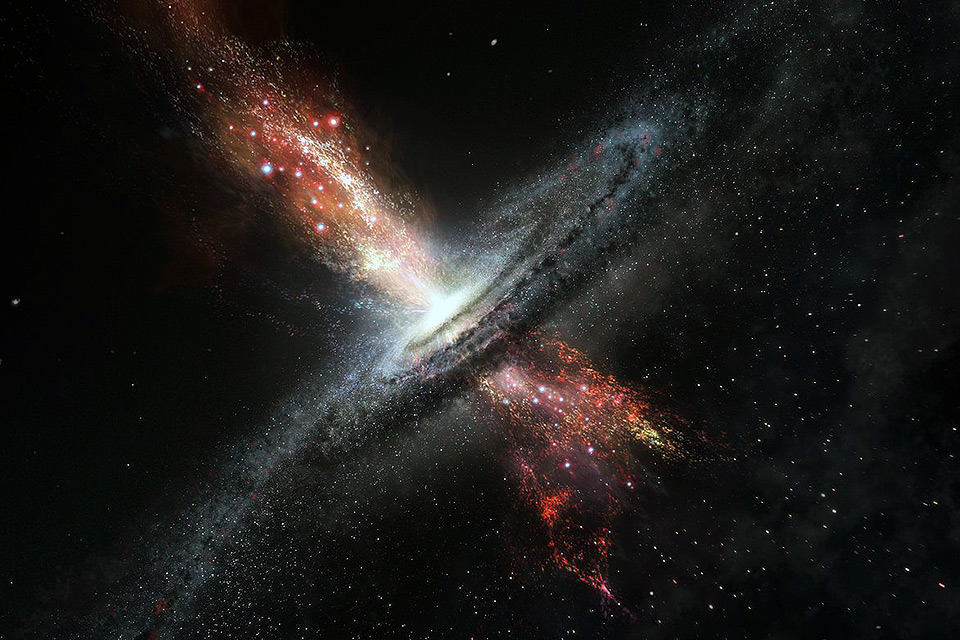
Stars are even born in material ejected out of galaxies, at high speed, by the energy of black holes active in their cores, points out an article published in the magazine Nature. According to the authors, although there was a theoretical prediction that the conditions of pressure and density in these flows could lead to the formation of new stars within the jet of matter itself, the observation described in the journal is the first to confirm this suspicion.
The detection was made using the Very Large Telescope (VLT) of the European Southern Observatory (ESO), based in the Atacama Desert, in Chile, and the article that describes it is signed by British, Spanish, Swiss and German researchers. The target of the observations was a pair of galaxies in the process of merging, known collectively by the designation IRAS F23128−5919, and located 600 million light-years from the Solar System.
One of the members of the pair has an active nucleus, which produces an intense flow of matter that is thrown out of the galaxy. It was the composition of this flow that the authors analyzed. “We report spectroscopic observations that clearly reveal star formation in the galactic flow,” says the article. “The inferred rate of star formation in the stream is greater than 15 solar masses per year.”
The stars found in the stream are probably very young, a few tens of million years old (the Sun, by comparison, is more than 4 billion), and early observations indicate that they are much hotter and more luminous than those formed in less violent conditions.
Quoted in a note released by ESO, one of the authors of the work, Helen Russell, from the University of Cambridge, said that some of the stars, those formed closer to the galactic disk, could end up being attracted back and integrated into the galaxy. “But those that form further along in the flow experience less deceleration and can definitively fly out of the galaxy.”
Reference
Star formation inside a galactic outflow
[ Nature doi:10.1038/nature21677 ]



